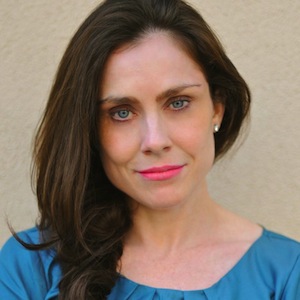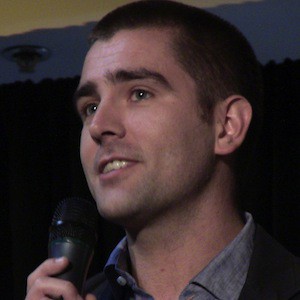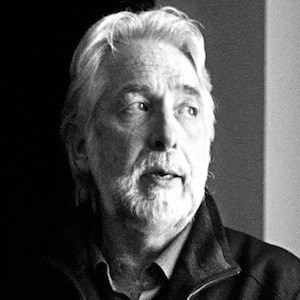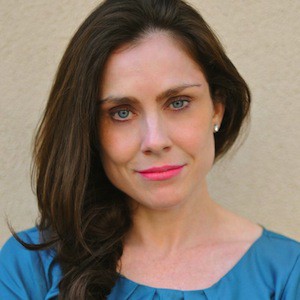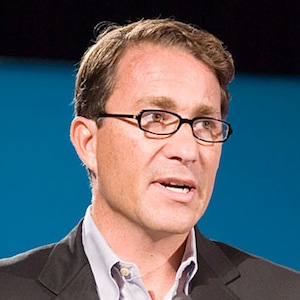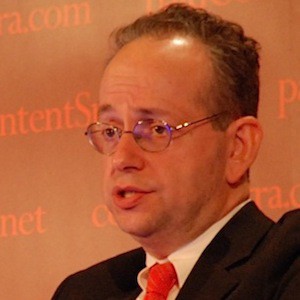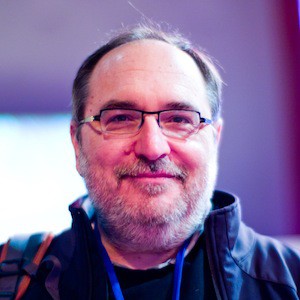John: It’s April 2nd. We’re at Twitter headquarters on Market Street in San Francisco. Speaking with Michael Sippey and Chloe Sladden, who are taking a few minutes out from their hard at work jobs of creating product.
Martin: Why don’t we start by, I guess either one of you or both of you talk about the development of Twitter, just for the sake of the historical record, how it was developed and how it got to be where it is today. In just a few minutes, if you can, just take us through a quick history.
Michael: Sure. You want to take that?
Chloe: I can take that.
Michael: I can kick that off. Twitter was started in 2006. It was actually a side project in a company called Odeo. They were building podcasting software. It was essentially started by three folks at Odeo Jack Dorsey, Biz Stone and Evan Williams. Jack had the insight and interest in using SMS and text networks to keep people connected throughout the day. They started essentially a service for you could text to one number. Anybody that was on the service would get that text message. It was a text rebroadcasting.
It was a great mechanism for keeping up with people that you knew while they were out and about. It was designed from the beginning to be a mobile service and allow people to connect using their cell phones, using SMS.
The product evolved over the years to include a Web UI, so that you could actually sign in on the Desktop Web and follow friends. They built a follow model so that you could follow individual people.
It essentially grew over time, both on the Web and in mobile, to have additional features around replying to people, around favoriting tweets, around having conversations, and at replies, mentions and hashtags into the glorious, cacophonous service that it is today.
Martin: Mike, when did it occur? I remember when it started. It wasn’t immediately obvious that this would turn into a real media platform. When did that start to happen? What were some of the first intersections between media and the Twitter service?
Michael: I wasn’t at Twitter at the time. As I look back, I was an early user of the service. I started using it in 2006. Some of my first memories of when it actually started to shift from personal sharing and status updates was when people started to share links. When it became not only just a text service, but you were using it on Desktop Web and it became a content discovery vehicle of people using it for, “Hey, have you seen this article, have you seen this picture, have you seen this video?” That behavior started to spring up.
We recently just launched a feature on Twitter to download your entire tweet archive. I’ve pulled down my tweet archive all the way back to 2006. Some of the early ones are funny.
You go through and you see this shift happening. In the beginning, it was just very short status messages. “Here’s where I am, here’s what I’m doing.” Then you start to see links being shared. You start to see conversations happening, more at replies, more conversations between people.
I think that link sharing was really the first thing that really started to transition it to being a real media platform, because of the nature of the service and of instant delivery of content and commentary around URL. I think that is when it actually started to pivot into being more than just the status update service.
Chloe: One of the most interesting elements about Twitter’s development I think is that it has been public from the get go. It has been this space of experimentation. It’s public. It’s conversational. It’s real time. Some of the earliest users who started to truly experiment with that were journalists. I was working at a news organization at the time before I joined Twitter, Current TV, which was trying to innovate around news. To me, there was a breakthrough moment around the 2008 elections when we were trying to figure out how do we bring the audience into the experience of the election?
We looked at Facebook. We looked at Tumblr. We looked at all these different sources out there. What if we just worked off of our own blog?
We saw that Twitter was public. We didn’t need to even talk to the founders to be able to look at the data and see what stories were arising.
The fact that you could pull the data, see what the world was thinking or saying, we did this around Obama’s acceptance speech. Just said, “Well, maybe there will be 50 tweets.” There were thousands of tweets giving us this totally different point of view on how the US was reacting to that acceptance speech.
It was such an experimental space. You could see, and you still see today, it’s one of our big points or efforts is to keep preserving this concept of Twitter as a canvas for creative people to experiment with.
In those early days, some of the most interesting experiments were around the election, were around news, were around breaking news. Journalists were leading a lot of that experimentation. The digital teams at newsrooms were starting to play with that in early ways.
From the get go, I think it was fascinating to see just people try to shape Twitter. That was a big part of Twitter’s early story is, what is Twitter?
It was left up to the users to shape in many ways.
Martin: Well, it had very open APIs at the time, too.
Michael: Yeah.
Martin: You guys had.
Michael: You could discover content. You could share content. You could build an entire ecosystem around it.
Chloe: That, by the way, was such a radical notion in the media. That’s radical. It took me a year to retrain my mind once I joined Twitter to be like, “We’re not top, down. This is a bottoms up experience. Removing controls and structure can be incredibly empowering and allow our product to develop.” That was coming from a media background my whole life. That was very different.
Martin: Although you’ve put a lot more controls and structure in it.
Chloe: Yes, as Twitter grows up, it has to pick paths, I think. The DNA of the company, the DNA of how the product formed, which is hopefully still there in many ways and informs, is something for you to talk about. That was a really important origin story that I think is a big part of Twitter.
Michael: Yeah.
John: You came from Current TV. Where were you?
Michael: I was at Six Apart, which was a blogging platform provider. I ran product at Six Apart for a long time.
John: Oh, that’s interesting.
Michael: Yeah, involved in that, helped essentially build Moveable Type and Typepad, and was involved in the early RSS efforts.
John: We have a lot of your compatriots.
Michael: Yes.
Martin: Is that where you ran into Dick, at FeedBurner?
Michael: Yeah, I ran into Dick. I knew Dick before FeedBurner, actually. We met through mutual friends in early, I call it Web 0.9 days, through the conference circuit. I knew him when he did Spyonit and then knew him when he did FeedBurner. We did a bunch of integration between Typepad and FeedBurner when I was in Six Apart. That’s how I got to know Dick.
John: Before you have to go, since we’re on the subject, let’s talk just a little bit more about Twitter as a tool in an election, in electoral politics and in campaigns. As I mentioned to you earlier, one of our fellow fellows was a social media director for the Obama campaign. Another one was a reporter for CNN. The two of them inhabit a world that just didn’t exist a few years ago in terms of the campaign process and the focus on not just social media, but Twitter, specifically Twitter.
Where is Twitter going? What’s next? You’re moving fast. It’s moving fast and Michael Slaby has said, “If the GOP tries to imitate what we did, it won’t work because we won’t be there when this is moving.” Where is it moving to? What is Twitter going to become?
Chloe: That’s a great question. We’re looking at seven or eight key elections coming up just in the next year that will all help shape Twitter. We have a German election, Australian election, Japan. Twitter as a company has a presence, a huge presence around the world. We just went through a US election and that definitely established new best practices. It brought the news cycle into a tighter time frame. It was much more conversational. I think that’s what makes it so fascinating that it’s not just a…
John: What do you think about it? Because we know how the reporters think about it and we know a little bit about how the campaign thinks about it. How do you think about it?
Chloe: I think about it on a couple of different levels. One, it allows journalists to have a much more organic back and forth conversation with their subjects. The cycle is just made…
The story is evolving minute by minute. That’s a different topography for journalists to navigate than I’m going to get my statements. I’m going to publish my article in the morning. We’ll see what the responses are…
Martin: Blogging really…
Chloe: It’s part of a continuum. It’s part of a continuum, but now I do think timing, the timing makes it a radical difference. It’s a huge shift from I’m going to put my blog post up. Blog posts are part of the process, obviously. But now, you’ve moved news from the morning newspaper, then there was TV and you could break in late at night. Now, you’ve got blogs. Now, you’ve got Twitter sharing news as it happens.
Blogging does that to but we are literally getting fragments of stories or snippets of stories which adds a whole other challenge and opportunity for new and journalism. To say, how do we tell stories as they happen, responsibly and effectively?
Martin: I have to say, I shouldn’t editorialize here, but I’d love to comment about this. As someone who has done a lot of interviews, I just can’t stand Twitter. Because the reporters that cover you try to do so in 140 characters or less. They take oftentimes what you say completely out of context.
It’s gotcha journalism on such a steroidal…I think it has a corrosive effect on…
Chloe: What’s driving that, do you think? Is that journalism or is that the medium.
Martin: I think it’s the medium.
John: The medium. Having said that, I just want to say, Martin, you’re an avid Tweeter at every conference and every meeting. You’re the first one on the board.
Martin: I love Twitter and I use Twitter extensively…
John: He’s Mr. Twitter.
Martin: I just don’t like to be the subject of journalistic tweets because I think part of it has to do with…What you said before is the velocity and the need to break through is so great right now that any kind of statement that you make that has the least bit of controversy and can be taken out and just broadcast is. And I…
John: One way to look at it…
Martin: Just let me finish, John. It reminds me of the “We didn’t build that” phrase in the last campaign. It got tweeted and tweeted and tweeted.
You didn’t build that. I’m sorry.
What do you think of that? How do you feel that, or don’t you agree?
Michael: I think actually what you’re getting out is some of the underlying economics of the media business, especially in online, which is driving not with the Times, but with the vast majority of everybody else, they have to drive page views. If you look at the dashboards that all of the newsrooms are using to essentially watch real time traffic. Each of the individual bloggers or journalists is incented on driving traffic to their stories. So they’re going to use the mechanisms that they have to drive traffic to their stories, right? They’re going to pull out, in order to drive as many pages, because they’re incented and paid on a bonus structure to actually drive traffic like that…
Martin: That’s very key. That’s really key.
Michael: Yeah. It’s really key. Essentially, that drives how you write headlines. That drives what you’re going to pull out and push in social media. That drives… I don’t think that’s actually because of Twitter. I think that’s because of the economics of what’s happening with online.
John: It’s also because of the DNA of journalists because if you look at a traditional magazine layout, a magazine has a story and in that story, it has a series of things called pulled quotes, which are quotes which, after you’ve read the story and edited it for a month or a week or a day, you pull them out and you put them there and those are designed to capture attention.
Chloe: To catch your attention.
John: Now, you have instant pull quotes, and they’re disembodied from the rest of the…
Michael: The rest of the context. Yeah.
Martin: That’s the point.
John: You have Martin Nisenholtz who feels that he can’t be understood in 140 characters, and that’s probably entirely fair. [laughter]
Martin: But John Huey can be.
John: No, no. I don’t give interviews anymore. The question becomes does it ultimately free expression or does it ultimately retard expression so that everyone, if you know you’re sitting there being interviewed by somebody who is tweeting…
Chloe: How do you balance it out?
John: Do you not say anything that’s quotable? You just drown out. Everything you say becomes anodyne.
Chloe: Which is not a good situation to be in. I do hope that…
John: None of this is your fault. [inaudible 0:14:37] was very good.
Chloe: Do you think the follower model will help counteract that high sugar sort of environment we’re in? Like reputation. I follow lots of journalists and reputation. I look at the follower count. It’s not perfect but it gives me a sense of, day in day out, are you going to report stories that are meaningfully told? Do you take me through this whole new, brave new world with a lot of complexity and a lot of unknown, do you guide me effectively? That’s what I’m going to look for in a journalist I follow. Hopefully, the time…
John: That’s your personal filter. Do you think others have that personal filter?
Chloe: That has a lot to do with our education system and how people are brought up thinking about how to use news and other tools…
John: Human nature.
Chloe: Yeah. Of course, people have totally different tastes. That’s why Twitter is so unique to each person and who they follow.
John: Here’s a question that I wonder about, being the parent of some 20 something kids who read…The reports that they don’t read are highly exaggerated, they do read. However, they do get a tremendous amount of their information from either Twitter or Facebook in the case of my kids, so their filters are their friends or the people they follow on these 140 account. Although, I get the impression that what you’re saying that it’s more the case of a referral system that takes them to other places.
Chloe: Yeah, hopefully.
John: When we look ahead at these coming generations, which is one of the things that the journalism business is trying to do it’s trying to figure out how these generations are going to evolve as consumers of information do you have any theories as people who… I mean, you’re vendors to all of us, but you’re vendors to them in a big way.
Michael: In a big way.
Chloe: I’m sorry. I do have to go because I’m ten minutes late for my next meeting. Sorry. I would love to stay. This is fascinating. You’ll get lots more. Nice to see you again. Have fun.
Michael: Here’s my general theory. I think it’s context dependent. You have, and we look at this because we serve…
That’s good an empty chair without Chloe sitting next to me.
Because we deliver to mobile phones, tablets, desktop web, we see different behavior on different platforms. What’s interesting is that, if you’re using your phone throughout the day, it’s snacking behavior. If you’re using a tablet, in the evening, sitting on the couch, it’s a little bit more meal behavior.
It you’re using a desktop and you’re at work, it’s definitely much more active…You’re searching. You’re in a lean forward mode of engaging. The news business needs to adjust to that, which is a very user centric model. It’s not instead of, we have the inverted pyramid, we have the story, we’re going to deliver the story to you in a bunch of different ways.
It’s being respectful of the user, what their context is, and how the reader actually wants to consume information at different points throughout the day.
John: In other words, if you’re hunkered down at your desktop, you’re much more likely to go somewhere deep, to download.
Michael: Download, engage. Whether it’s infographic or interactive stuff…
John: Or a long form.
Michael: Long form.
John: Or video and links. Whereas, if you’re on your phone, you’re just looking for the quick hit, a sugar high.
Michael: I don’t know if it’s a sugar high. We can agree to disagree on the characterization. But it’s a different experience. I always come back to…There are 24 hours in day. People can’t really multi task. You have a limited amount of time that you can spend on individual pieces of information. You’re competing against, essentially, one tap away whether it’s another, different kind of news site, or whether it’s information and status from your friends, or whether it’s Angry Birds.
John: First of all, that explanation you just gave makes me feel, personally, a lot better, because that’s how I interact with Twitter. I thought maybe it was just an old person not knowing how to do it. So everyone does it. I feel better. To get back to your point, how can the news business react to that? How do you target that?
Michael: I don’t really know how the news business is going to react to that. I can tell you that, what we see with Twitter users is that these are both incredibly connected information consumption devices. But they’re also great sharing devices. That is what has been really interesting about Twitter. It’s enabled people to share what’s happening around them, in real time, in a public way. The news business could take advantage of that in a way that it hasn’t yet. Whether that’s like Chloe did, with Current, in 2008, looking at the aggregate sentiment of what people are talking about around a particular event, or whether it’s diving in for a multi perspective point of view on what’s happening in a particular place at a particular time.
We tell this story all the time. When the plane went down on the Hudson, the most interesting photo was the one tweeted by the guy on the ferry. He had 400 followers at the time. He did not have distribution. This is the big difference between what happened with blogging and what happened with Twitter. The viral mechanics are built into the platform which is not the case in traditional web publishing or in blogging.
Martin: One of the themes that has come through the entire series of interviews is this notion that what the web has done is disintermediated a whole range of industries, but in journalism in particular, it creates a direct connection between the reporter, or in some cases just the user, many cases, most cases, just the user and the audience. In the case of Facebook, it’s a vast network of friends. In the case of Twitter, it’s much more of a broadcast context. One of the things that’s happening is that Twitter is re aggregating what was or what is a very fragmented environment. It’s creating its own broadcast network, in a sense could be replacing every other network, in some very extreme contexts.
When you think about it like that, how do you think about the product development side to support…It sounds to me like a good business model. How do you create a product, going forward, that supports that, and supports the content ecosystem at the same time? Because as this thing is fragmented out, the underlying economics have largely died.
In particular, if you could talk about that in a mobile context, because you guys are a mobile first kind of company. That would be very helpful. Sorry for the long question.
Michael: No, that’s fine. The metaphor that we use often, and Dick talks about this a bunch, is the global town square. We are, essentially, where people come to find out about what’s happening in the world. It’s where you come to see your friends. It’s where you come to share what’s happening, it’s where you come to hear the crazy guy on the soap box or whisper to your friend about the crazy guy on the soap box. It’s come to get entertained, or find out about great things to learn to buy or rent or whatever. It’s a really great metaphor. It’s a platform. Like a town square, you walk in. You know what to do when you get there. You can see wherever you are. You can see what’s happening there. It’s necessarily a good thing for the public to understand, this is the center of the town. This is where the conversation happens.
The piece that is for us is that when you have these devices and they’re connected everywhere, you can actually truly have it be global. People can share from wherever they are and consume from wherever they are. But it necessarily means that you have a constrained palette.
What we’re trying to do, from a discovery perspective, is make sure that we can take all the signals that we have about a user their history of interactions with Twitter, what their interests are, who they follow, their location and their history of interacting with the product, to deliver them content that they’re interested in when they’re searching, when they’re using Discover, when they’re looking for accounts to follow.
Martin: And people that they’re interested in.
Michael: And the people they’re interested in. The second thing is, when you actually find a tweet that you want to engage with and you tap in to look at that tweet, we want to present the best representation of the content that’s behind that tweet, right there in the tweet, directly for the user.
Martin: One thing you haven’t done, unlike Facebook, is reorder the newsfeed.
Michael: Correct.
John: Why?
Michael: A foundational piece of Twitter is that it’s real time. We think that it’s a very simple organizing principle to do reverse chronological order. It’s something that people understand. We started to play with that a little bit, in the Discover tab, essentially starting to reorder some things, based on relevance. But your home timeline is a very simple metaphor. It’s reverse chronological order of the people that you follow. We found that to be a really powerful way for people to understand Twitter.
John: Would you finish the thought you were saying about learning to present the underlying content.
Michael: Yeah. We want to present the underlying content.
John: What did you mean by that?
Michael: We have a platform that publishers and developers user, called Twitter cards, which allow them to…Any time someone shares a link, if a publisher or developer opts into this program, we can go crawl that link, pull out metadata about the content that’s on that URL and present it to the user under the control of the publisher or the developer. They can choose, A, whether to show it, B, what to show. What headline to show, what pull quote to show, what photo to show, what call to action to show.
John: The publisher can…
Michael: Yep. The publisher can decide to do that. We’re working all the time to make that more capable so that you get, essentially, a slice of the experience while you’re inside Twitter and you let the publisher or developer have control over where does the user go when they tap, what do they see when they tap, and be able to track their behavior through that.
John: This may have been a better question for your now missing colleague.
Michael: Yeah. That empty chair.
John: I’ll ask you anyway. I get the sense, from my previous life and from listening to what you’re saying now, that Twitter is, as it grows up, as Chloe says, formalizing relations much more with established content companies and established publishers. To what end? I understand what’s in it for the publisher. What’s in it for Twitter?
Michael: What’s in it for Twitter is a great experience for our users. They want to talk about the things that they’re seeing and interacting off of Twitter. They want to talk about the Olympics. They want to talk about what they’re watching on television. They want to talk about the news. They want to talk about the content that they’re experience off of Twitter. So, we want to enable that behavior. We want to make it really simple, so that when I start talking about what I’m reading in The Times or what I’m watching on CNN, when you actually see, when my followers look at my tweets, they can engage with the content that’s from The Times or from CNN.
John: I also get the impression that there are widely varying degrees of intelligence of use of Twitter by traditional publishers or broadcasters. Some are doing some very smart things. Some are doing some things that are the equivalent of broadcasting to Mars. Am I right or wrong about that?
Michael: Different folks are on different levels of sophistication. I think that’s fair to say.
John: What would be a smart use of it? What would be a less than optimal use?
Michael: The folks that are smart are actually using it in a way that is natural to Twitter. The things that are great about Twitter are that it is public, it’s open, it’s conversation and it’s real time. I’ll give you an example of something that I’ve loved over the past couple weeks. The NCAA from March Madness account has been tweeting out real time, not only just tweets from the games you could follow March Madness and essentially follow what’s happening with the games. They were doing it in a way that was not just about scores. They had a tone of voice to them. They felt like a human was actually writing them, with the excitement of someone that loves college basketball. And they were including real time video clips.
Ten seconds after something happened, they were able to take a video clip and attach it to a tweet. So I could be on my phone, be following March Madness and see what happened with the Duke game and get a clip of what happened right there which happened to me on Sunday. That’s how I found out about Ware breaking his leg, was in a tweet.
John: That’s NCAA, so that’s probably Turner, right?
Michael: Yeah.
John: Turner is doing that. What would be an example of a less efficient, misguided use?
Michael: An unfortunate use is when you’re essentially sharing what I called undifferentiated content. If you’re only sharing your headlines and links back to your articles, your Twitter feed becomes just a re broadcasting of your home page over your RSS feed. That’s not an efficient and effective use of Twitter. I can go get that content anywhere else. If that were the only thing that an individual publication were doing, it’s much more effective for me to just go to their website. It’s just not as conversational. It’s not native to the platform.
Martin: Let’s return to the reverse chron portion again. I want to drill a little deeper into that. It’s very simple. But the issue with it, to some extent, is that the signal to noise ratio remains pretty high. Or at least it can be pretty high. It depends on how many followers you have and how you curate those followers and how much spam. There’s just a lot going on there. The question is, can you envision not to replace that as the principal visual cue that Twitter has, but an alternate taxonomy where it’s more channelized, where you get to create something a little bit more, what a friend of mine calls the interest graph, rather than the real time chronological graph feed. Can you imagine that?
Michael: Yeah, I can imagine that. We have some of that. Some of that is happening in the product today. A lot of our power users will use lists to essentially segment. I do it, like these are my sports accounts that I follow, these are my music accounts, these are my tech accounts. I’m into contemporary arts, so these are my art nerds that I follow.
Martin: I don’t think many people even know that they can do that.
Michael: Yeah, so that’s something that we’re looking at how do we actually make that more discoverable and better references to that in the product?
John: I agree with that.
Michael: You create lists. If you’re on Desktop Web, whenever you’re on a user’s profile page, you can add to a list. If you use Twitter for Android, you can do that as well.
John: That’s what I have discovered is the biggest problem with Twitter. You get used to it as a mobile platform and you forget that you have to adjust it on the desktop…
Michael: On the desktop.
John: …To make it really work.
Michael: Working on some of those things.
Martin: Yeah, that’s true.
Michael: Working on some of those things.
Martin: Hey, Sippey, what’s your timing like? Do you have some more time?
Michael: I’ve got about five more minutes.
Martin: Perfect.
Michael: Cool.
Martin: Cool. OK. Getting back to this notion of this huge aggregation point, you guys kind of behave like a common carrier in the sense that people publish into the platform, you don’t really care that much what the content is, or at least that’s my sense. I’m not sure how you feel about obscenity and stuff like that. But can you imagine a point where you would change that notion or you would begin to, for lack of a better word, censor certain areas of content? My sense is that Twitter is very, you use the word open.
Michael: Yeah. Very open. Very open. We’re not going to prevent people from publishing into the platform. There are some obvious places where we have to avoid child pornography and hate speech. There are some things where we…As you can see from our history, we go to the ends of the Earth to defend our users and their rights to publish. What I want to make sure that was as you’re coming on Twitter that you’re finding great content for you. You may not see if, unless you’re explicitly following them, if you’re searching for something, like you may see the best tweets about that particular topic. We spend a lot of time and investment in our search and relevance infrastructure to make sure that, if you’re searching for a particular topic, you’re finding the best tweets about that particular topic.
Still being able to do, to look at the real time stream of everything that’s happening on it. But the default view is to find the best tweets on it, which are typically going to come from people that have a few more followers and have some history on the platform, because there’s more social engagement on them.
That happens, but it doesn’t mean, I can go follow anybody on the platform as long as they haven’t protected their account, I can go follow them. That’s the beauty of Twitter is that kind of open nature for publishing. We have, there are pockets of users that you, in your day to day life, will never see because they have their own social graphs and their own networks and they’re talking about things that you don’t talk about. It’s a great thing to go find those pockets of users and to see what’s happening there.
Martin: Let’s end on the business model. You guys, I think, just announced or somehow got announced that you were way ahead of your plan in terms of revenues, which is great. You seem to be the first ones to have really cracked the code on mobile advertising. Am I right about that?
Michael: I don’t know if we’re the first ones to crack the code. What I’ll say is that, so because…the thing that we’ve done, and this was before my time and I’ll give credit to the team that was here at the time. When the decisions were made around Twitter’s ad products, they were really smart decisions, which is, we’re going to make them primitives of the existing product. The ad unit will be a tweet. When you get a lot of engagement on that tweet, just like you have native engagement on the product, that’s where the value is.
People are using our advertising products to help drive distribution of typically content and engagement that they’re already doing on the platform. Our ad products are around promoted tweets, promoted accounts and promoted trends. Those are all things that exist natively on the platform and they’re all things that are…
Because Twitter was built from the ground up as a mobile first product in a mobile first platform, they work well there. Because a tweet is 140 characters, it works really well on the screen. That ad product works well there.
That’s just a testament to the decisions that were made around, “This is how we’re going to do advertising on Twitter. We’re going to essentially put unobtrusive ads that people like into their stream that are just like the rest of the content on Twitter.”
The people that are good at advertising on Twitter are typically the people that are good at Twitter, which is great because it’s self reinforcing.
